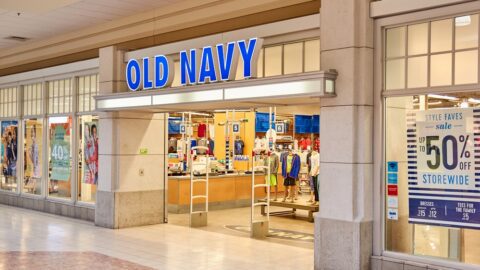Following is Part 2 of the Retail TouchPoints feature focused on inventory best practices. This article will focus on new developments in RFID, benefits of the technology and successful retail implementations. Click here to download a PDF version of the complete inventory report.
Progressive retailers are revising their inventory management, delivery and fulfillment strategies to align with evolving consumer demands.
“Companies are looking into a variety of inventory process improvements,” said Kevin Permenter, Senior Research Associate at Aberdeen Group. “Retailers are looking at their inventory mix, re-assessing their safety stock setting policies and are also looking to optimize their inventory placement, or where geographically to hold their inventory. All of these things are critical, but they are made even more important when you are managing these concerns across multiple channels.”
Retailers can’t optimize their omnichannel efforts unless they have a complete picture of inventory — in stores, online and in the supply chain. Radio Frequency Identification (RFID) technology has come into focus as a means to help retailers get an accurate view of inventory across locations.
Using RFID technology, retailers can ensure real-time visibility into the number of products — as well as breakdowns by colors and sizes — that are available across locations This will help create a better experience for consumers as they shop across channels, observers noted.
The primary benefit of RFID is that it “feeds into the omnichannel concept,” according to Michael Liard, VP of AutoID at VDC Research. “Omnichannel is all about enabling customers to buy goods from any type of retail outlet — be it online, in-store, through a kiosk, or other means. But the key to success is real-time inventory control, visibility and accuracy, all of which RFID can provide.”
RFID On The Rise
Apparel and footwear categories currently are seeing the most movement in RFID implementations. In the coming years, though, adoption is expected to spread to other categories, according to Liard. “There is some cases of the technology going into consumer electronics, but it really depends on the retailer and the product categories that are carried.”
But the RFID market is on the rise and is expected to reach $18.7 billion by 2017, according to Global Industry Analysts. Growth will be driven primarily by “fast-paced deployments of RFID projects in developing Asian countries, especially in China,” company sources noted. Additionally, the cost is currently $0.05 per RFID tag and “is likely to further go down in the near future. The dwindling prices will help boost widespread adoption of item-level tagging.”
Recent success stories from American Apparel, Macy’s and Walmart also have helped accelerate the RFID market. The retailers noted several benefits, such as improved inventory visibility and accuracy, task completion and loss prevention, which is encouraging other retailers to test and implement it in stores.
“One of the most long-lived issues in retail is being able to count inventory quickly and seamlessly,” explained Nick D’Alessio, Global Practice Leader for the retail division of Zebra Technologies. “Typically, retailers did this twice a year, but for true omnichannel strategies you need to do cycle counting, multiple times and in real time. With RFID, employees can count items multiple times a day with up to 99% accuracy.”
Industry sources have indicated that retailers using RFID technology can count inventory up to 50 times faster. Having a real-time look at inventory levels help decrease overall inventory distortion — or the drift between what a retailer’s systems indicates and what is actually available in a store.
Distortion “becomes a huge problem when a customer wants to know with a high degree of certainty if an item she is looking for is available,” said Randy Dunn, Director of Global Sales and Professional Services at Tyco Retail Solutions. “If distortion rates can get as high as 25% to 30%, it becomes very difficult to use that information to make any meaningful customer facing promises.”
As omnichannel retailing continues to evolve, “the momentum of RFID will only accelerate,” Dunn noted. “Retailers that operate large store footprints need to find a way to leverage all of its inventory across all of its shopping channels without impacting the actual store shopping experience if they hope to maximize their omnichannel retailing opportunity. RFID, and its proven inventory accuracy benefits, will be essential to doing that well.”
Benefits Across The Supply Chain
RFID technology empowers in-store employees to better track and update inventory, which helps team members have a constant pulse on what products, sizes, colors and styles are available in-store.
If a product is unavailable in a store, for instance, employees will have access to real-time information across the enterprise so they can either order the product from another store or on the e-Commerce site.
Retailers that implement RFID across all locations also have the opportunity to turn brick-and-mortar stores into distribution centers, which provides more flexible delivery options to consumers. This is what makes RFID a “game-changing technology,” according to Liard. “Now, instead of having fulfillment center out on the west coast and ordering from east coast, you can just order from the store so the product gets to you faster.”
Retailers also are trying to “push RFID closer to the source” — the supply chain partners and manufacturers — “which is helping organizations realize the vision of omnichannel retailing,” Liard said. “Retailers are discussing with partners the value to all parties and why it’s needed, as well as the overall cost and where tags should be applied and when.”
The key value across the supply chain is improved data accuracy and visibility, Liard explained. “That’s the key talk track that gets people on board because there is a promise of streamlined supply chain operations, which helps get the product to retailers — and customers — more quickly.” He added that if vendors have access to inventory levels and overall product demand, they will be able to fulfill orders more efficiently.
Complete the form below to download a complimentary pdf of the two-part Inventory report.












